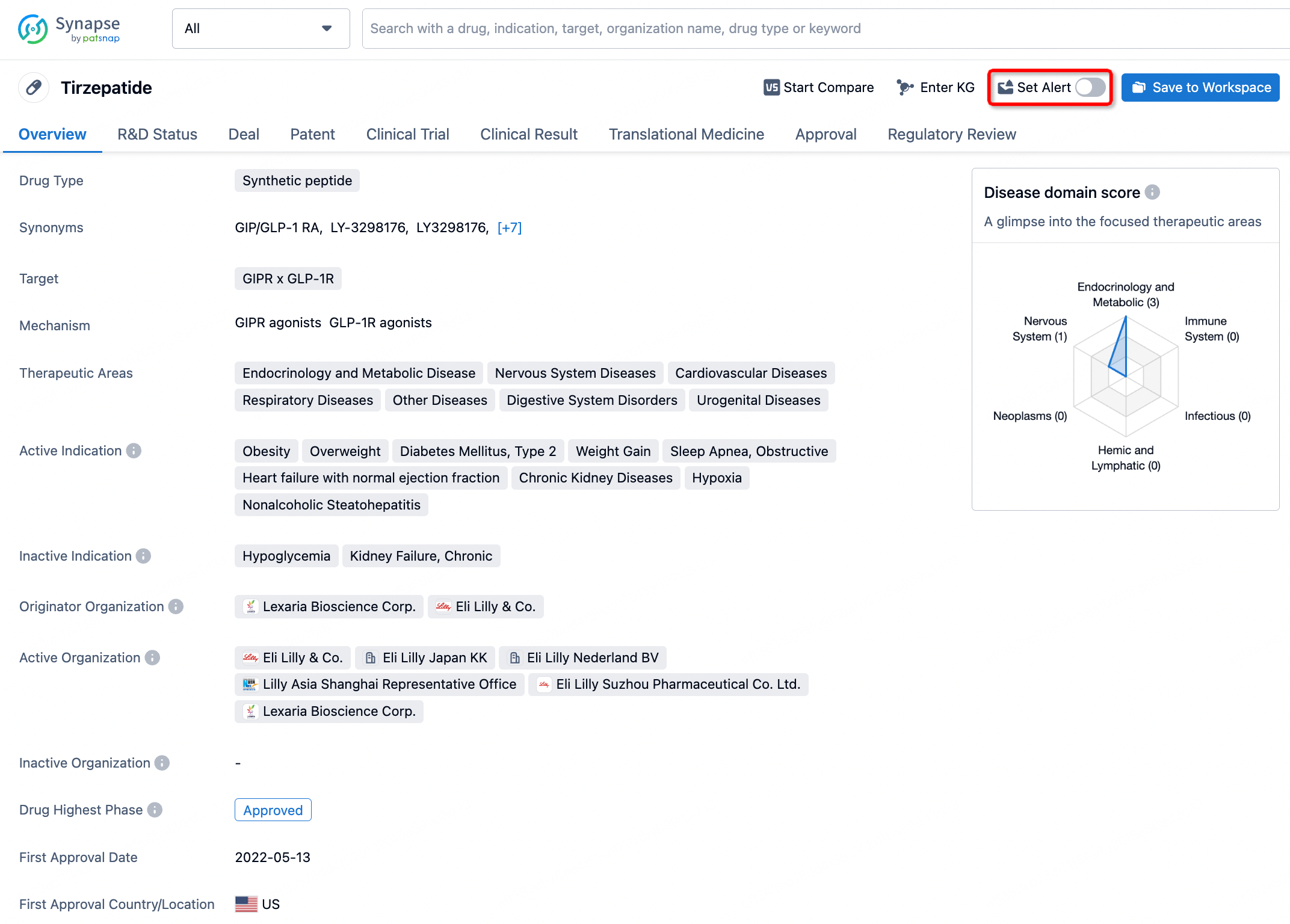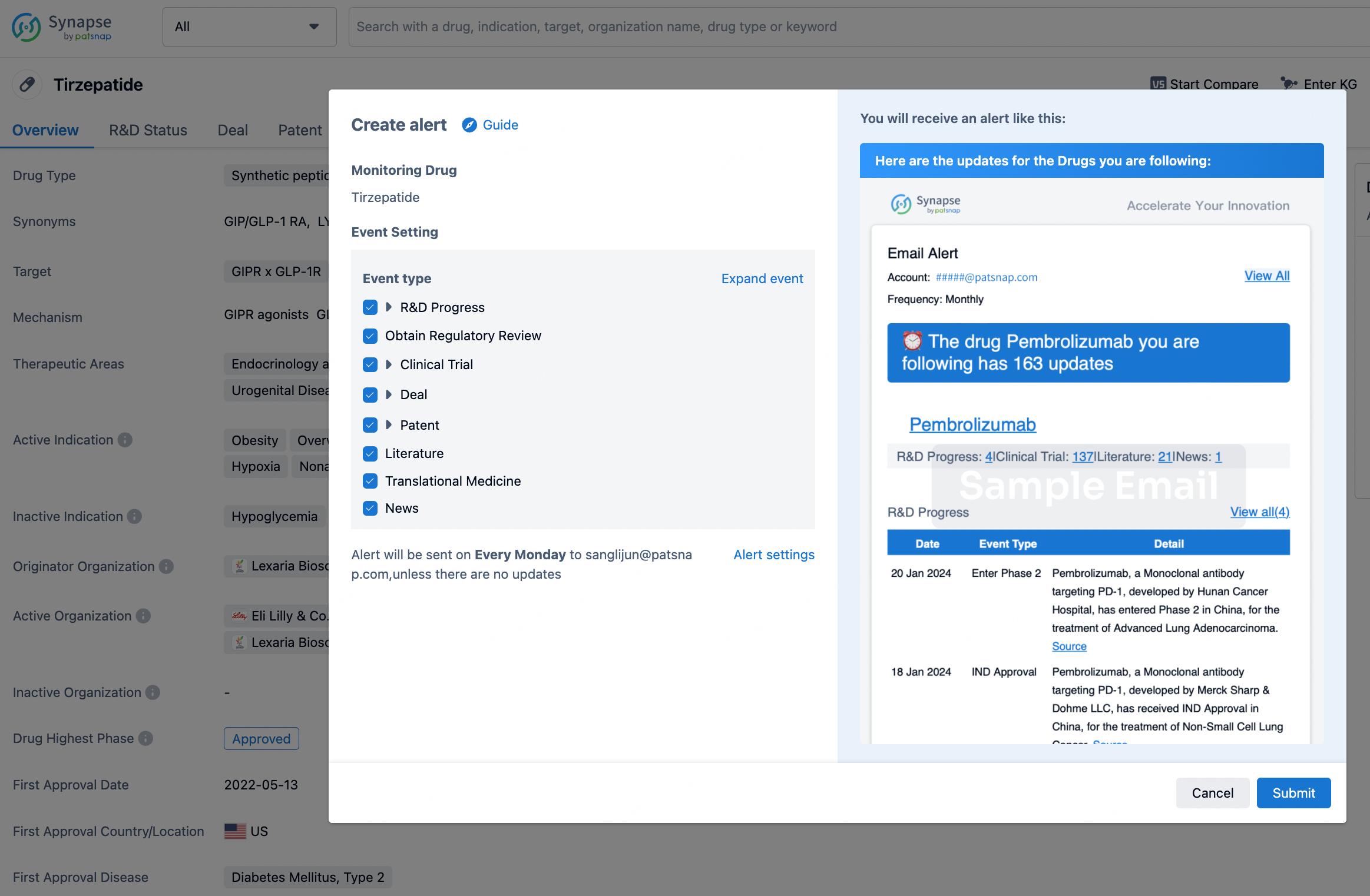Request Demo
What is the mechanism of Betahistine Hydrochloride?
17 July 2024
Betahistine hydrochloride is a medication widely used to treat symptoms associated with Ménière's disease and vestibular disorders, such as vertigo, tinnitus, and hearing loss. Despite its long-standing clinical use, the exact mechanism of action of Betahistine hydrochloride is intricate and not entirely understood. Nevertheless, research indicates that its therapeutic effects are primarily mediated through a combination of histamine receptor modulation, increased inner ear blood flow, and central vestibular compensation.
One of the principal mechanisms by which Betahistine hydrochloride exerts its effects is through the modulation of histamine receptors. Betahistine acts as a partial agonist on H1 receptors and an antagonist on H3 receptors. By stimulating H1 receptors in the inner ear and in the central nervous system, Betahistine causes vasodilation and increased capillary permeability, which can help improve blood flow to the inner ear. This enhanced blood flow may mitigate the symptoms of vertigo and contribute to the stabilization of hearing.
Furthermore, Betahistine's antagonistic action on H3 receptors is significant. H3 receptors are primarily presynaptic autoreceptors that regulate the release of histamine and other neurotransmitters, such as dopamine and acetylcholine. By inhibiting these receptors, Betahistine increases the release and turnover of histamine. The elevated levels of histamine improve neuronal excitability and neurotransmission, which are crucial for maintaining balance and reducing vertigo symptoms.
Another critical aspect of Betahistine's action is its influence on the microcirculation within the inner ear, particularly in the stria vascularis, a part of the cochlear structure responsible for producing the endolymph fluid. Disturbances in endolymph homeostasis are believed to be a contributing factor to the symptoms of Ménière's disease. Betahistine's capacity to enhance blood flow in this area helps in the normalization of endolymph production and absorption, thereby alleviating the pressure buildup that can lead to vertigo and hearing loss.
In addition to its peripheral effects, Betahistine also plays a role in central vestibular compensation. Vestibular compensation is the process by which the brain adapts to changes or losses in input from the vestibular system, helping to maintain balance and spatial orientation. Research suggests that Betahistine facilitates this compensatory mechanism by promoting neuronal plasticity and enhancing the synaptic activity of vestibular nuclei in the brainstem.
In summary, the mechanism of Betahistine hydrochloride involves a multifaceted approach, including the modulation of histamine receptors, improvement of inner ear blood flow, and facilitation of central vestibular compensation. Through these combined actions, Betahistine effectively reduces the symptoms associated with Ménière's disease and other vestibular disorders, providing relief to patients suffering from vertigo, tinnitus, and hearing loss. Understanding these mechanisms offers valuable insight into how Betahistine works, thereby informing its clinical application and potential future research into more targeted therapies for vestibular dysfunctions.
One of the principal mechanisms by which Betahistine hydrochloride exerts its effects is through the modulation of histamine receptors. Betahistine acts as a partial agonist on H1 receptors and an antagonist on H3 receptors. By stimulating H1 receptors in the inner ear and in the central nervous system, Betahistine causes vasodilation and increased capillary permeability, which can help improve blood flow to the inner ear. This enhanced blood flow may mitigate the symptoms of vertigo and contribute to the stabilization of hearing.
Furthermore, Betahistine's antagonistic action on H3 receptors is significant. H3 receptors are primarily presynaptic autoreceptors that regulate the release of histamine and other neurotransmitters, such as dopamine and acetylcholine. By inhibiting these receptors, Betahistine increases the release and turnover of histamine. The elevated levels of histamine improve neuronal excitability and neurotransmission, which are crucial for maintaining balance and reducing vertigo symptoms.
Another critical aspect of Betahistine's action is its influence on the microcirculation within the inner ear, particularly in the stria vascularis, a part of the cochlear structure responsible for producing the endolymph fluid. Disturbances in endolymph homeostasis are believed to be a contributing factor to the symptoms of Ménière's disease. Betahistine's capacity to enhance blood flow in this area helps in the normalization of endolymph production and absorption, thereby alleviating the pressure buildup that can lead to vertigo and hearing loss.
In addition to its peripheral effects, Betahistine also plays a role in central vestibular compensation. Vestibular compensation is the process by which the brain adapts to changes or losses in input from the vestibular system, helping to maintain balance and spatial orientation. Research suggests that Betahistine facilitates this compensatory mechanism by promoting neuronal plasticity and enhancing the synaptic activity of vestibular nuclei in the brainstem.
In summary, the mechanism of Betahistine hydrochloride involves a multifaceted approach, including the modulation of histamine receptors, improvement of inner ear blood flow, and facilitation of central vestibular compensation. Through these combined actions, Betahistine effectively reduces the symptoms associated with Ménière's disease and other vestibular disorders, providing relief to patients suffering from vertigo, tinnitus, and hearing loss. Understanding these mechanisms offers valuable insight into how Betahistine works, thereby informing its clinical application and potential future research into more targeted therapies for vestibular dysfunctions.
How to obtain the latest development progress of all drugs?
In the Synapse database, you can stay updated on the latest research and development advances of all drugs. This service is accessible anytime and anywhere, with updates available daily or weekly. Use the "Set Alert" function to stay informed. Click on the image below to embark on a brand new journey of drug discovery!
AI Agents Built for Biopharma Breakthroughs
Accelerate discovery. Empower decisions. Transform outcomes.
Get started for free today!
Accelerate Strategic R&D decision making with Synapse, PatSnap’s AI-powered Connected Innovation Intelligence Platform Built for Life Sciences Professionals.
Start your data trial now!
Synapse data is also accessible to external entities via APIs or data packages. Empower better decisions with the latest in pharmaceutical intelligence.


